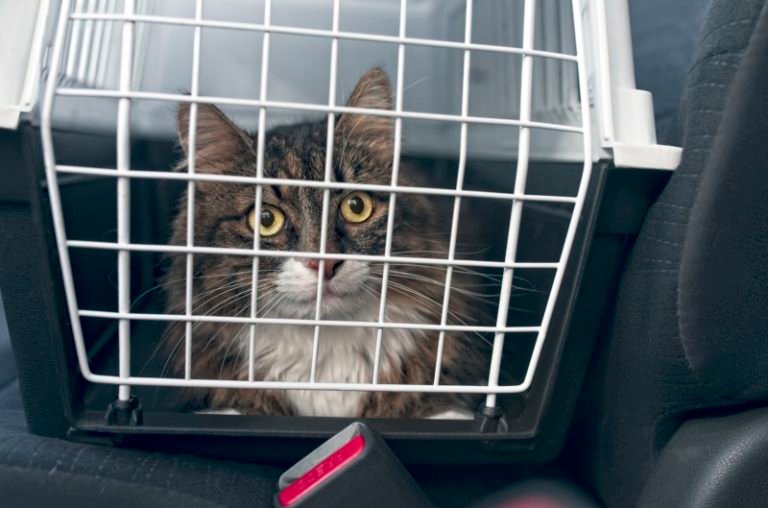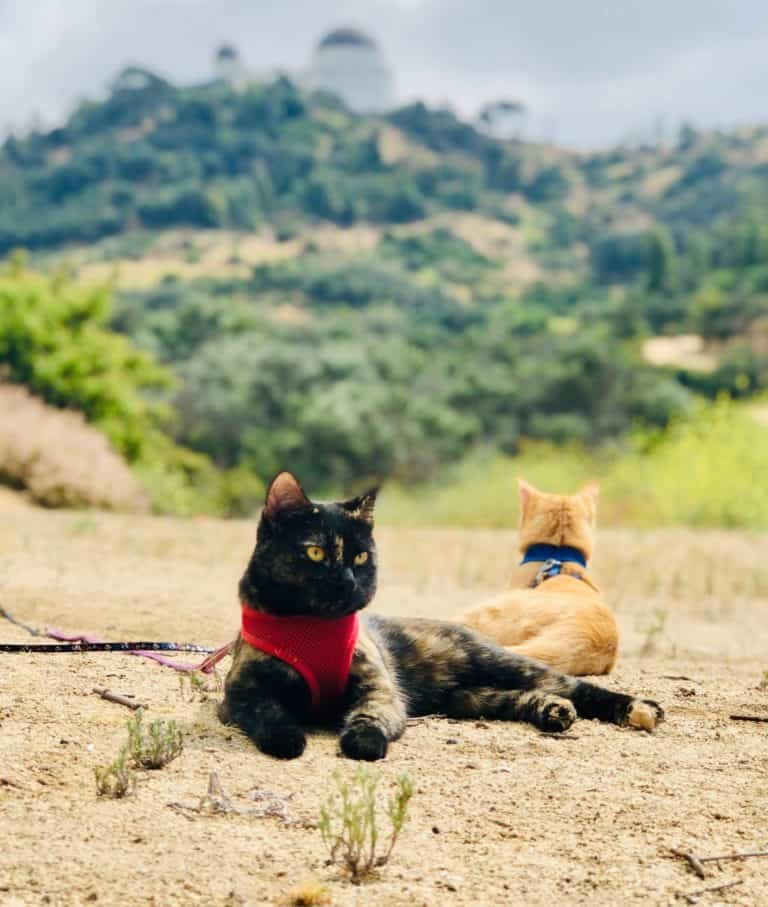Traveling with cats can be an exciting adventure, but ensuring their safety and comfort in the car requires some extra thought and preparation. Whether you’re headed to the vet, going on a road trip, or simply running errands, it’s important to prioritize your cat’s safety and well-being in the vehicle. While dogs often enjoy car rides, cats tend to be a bit more apprehensive, making it essential to provide the right setup and training. Here’s how you can keep your feline friend safe, comfortable, and calm during car journeys.
Why Cats Deserve Safe Travel Too
Many pet owners are familiar with the joy of traveling with dogs, but cats can be just as good travel companions—if they’re properly prepared. Cats, however, are more independent and cautious, so it’s not always as simple as loading them into the car and hitting the road. Unlike dogs, cats tend to be more anxious in unfamiliar situations, and the car can be an overwhelming environment for them. Whether it’s a short trip to the vet or a long road trip, it’s important to plan ahead to ensure a smooth ride for both of you.

Choose the Right Restraint for Car Safety
The first and most important step in keeping your cat safe in the car is choosing the proper restraint system. Letting your cat roam freely in the car can lead to dangerous situations—your cat could end up in your lap or under your feet, distracting you while you drive. In the event of an accident, an unsecured cat could be seriously injured. Fortunately, there are several effective options to help keep your cat safe and secure.
1. Cat Carrier
For many cats, the most comfortable and secure way to travel is in a carrier. Carriers provide your cat with a private, cozy space, protecting them from impact in case of an accident. They also prevent your cat from escaping or moving around the car while you drive.
Carriers come in two main types: hard-sided and soft-sided. Hard-sided carriers are sturdier and provide more protection, while soft-sided carriers are more portable and may be easier to handle, especially when getting in and out of the car. Some soft-sided carriers even come with built-in seatbelt straps for added security.
The Center for Pet Safety has crash-tested both soft and hard-sided carriers, so you can make an informed decision based on your cat’s preferences and your own needs. No matter which type you choose, be sure to introduce your cat to the carrier well in advance of your trip to help them feel comfortable inside it.
2. Travel Harness
If your cat isn’t a fan of being confined to a carrier, a travel harness might be a better option. Harnesses designed for cats are a safe and practical way to keep them restrained while allowing them to move a bit more freely. Look for a harness that distributes pressure across the chest, which provides more comfort and security during travel.

To use the harness, attach a leash that clips into the seatbelt receptacle, so your cat stays safely in place. This setup allows your cat to sit, stand, or even lay down, and you can adjust the tension to give them a bit of room to move. However, it’s crucial to train your cat to wear the harness before your trip. Cats typically take some time to get used to wearing a harness, so start the process early to ensure your cat is comfortable.
3. Crash-Tested Crate
For cats who prefer privacy but need more space than a traditional carrier offers, a small or medium-sized dog crate can work well. Crates provide more room for your cat to move around and are a good option if your trip is longer. While not as easy to carry as a smaller carrier, a dog crate can be a convenient solution when used in the backseat or cargo area of your vehicle.
A crate also allows you to add water bowls and, if necessary, a disposable litter box to make your cat’s trip more comfortable. However, it’s important to note that crates can be bulkier and less portable than carriers, so consider this option based on your specific travel needs.
Never Travel Without Restraints
While it might be tempting to let your cat roam freely in the car, this is a major safety hazard. An unsecured cat can easily distract the driver, potentially leading to accidents. They could also hide in places you can’t reach, get injured by sudden movements, or even bolt when you open the car door.
Always make sure your cat is safely secured, whether in a carrier, harness, or crate. Additionally, when you’re getting in and out of the car, it’s essential to keep the carrier door closed or hold onto the leash to prevent your cat from escaping. It’s also a good idea to add identification tags to your cat’s harness and consider microchipping them for added safety.

Help Calm an Anxious Traveler
Even with proper restraint, some cats still get anxious or stressed in the car. If your cat doesn’t take well to car rides, there are a few methods you can try to make the experience more comfortable for them.
Calming Products
There are various calming products available that may help ease your cat’s anxiety. Pheromone sprays like Feliway can have a soothing effect on many cats, helping them feel more relaxed in the car. CBD and hemp oil-based products have also become popular for their calming effects, but it’s important to check with your veterinarian before using any new products on your pet.
Another option is using a calming wrap, such as a Thundershirt, which gently applies pressure to your cat’s body, mimicking the feeling of being held. Some cats find this comforting during stressful situations, like car trips.
Lastly, if these methods don’t seem to work, consult your veterinarian. They can recommend specific remedies or even prescribe medications if your cat’s anxiety is severe.
Final Thoughts on Car Safety for Cats
Traveling with cats doesn’t have to be stressful, as long as you prioritize their safety and comfort. Choosing the right restraint system, whether it’s a carrier, harness, or crate, is essential to keeping your cat secure. With patience, training, and the right tools, you can help your cat adjust to car trips, making them more enjoyable for both of you.
Remember, preparation is key. Start introducing your cat to their travel setup well before your trip, and don’t forget to consider calming products if your cat is nervous on the road. With these strategies in place, you can enjoy safer and more comfortable car rides with your feline friend. Safe travels!


